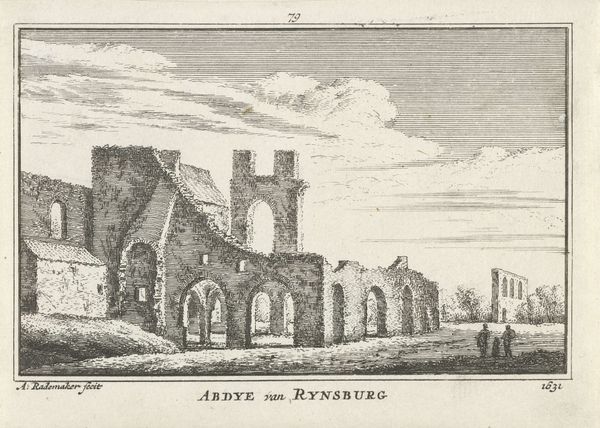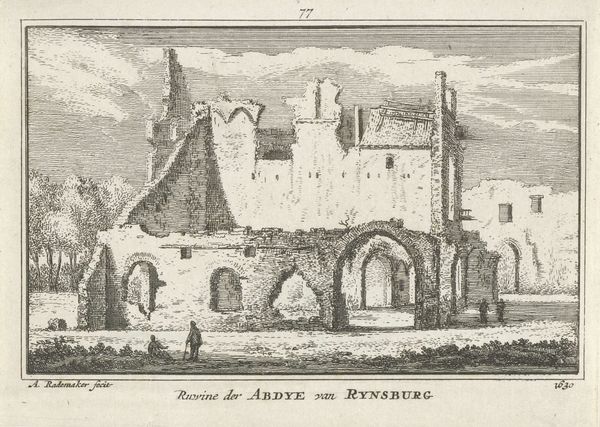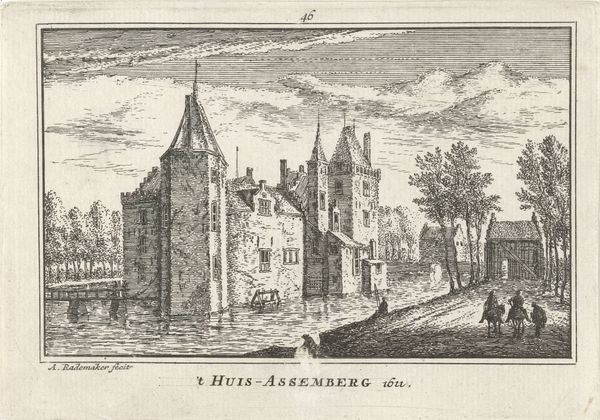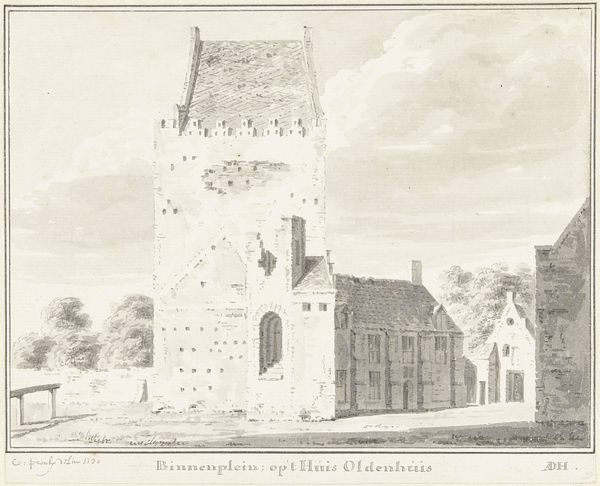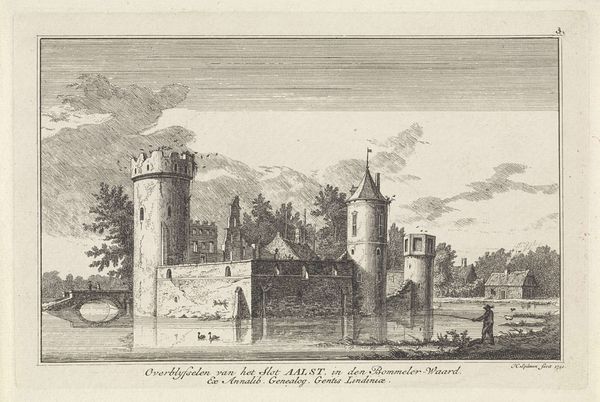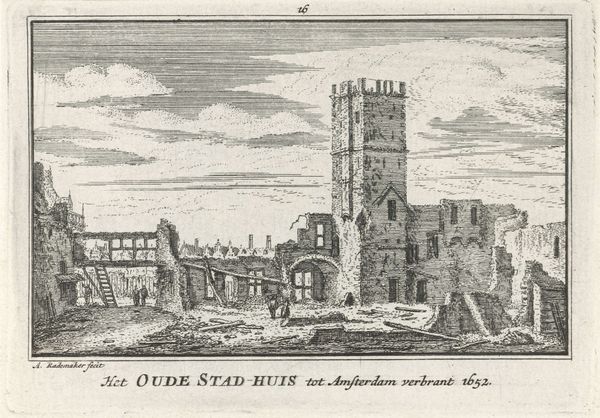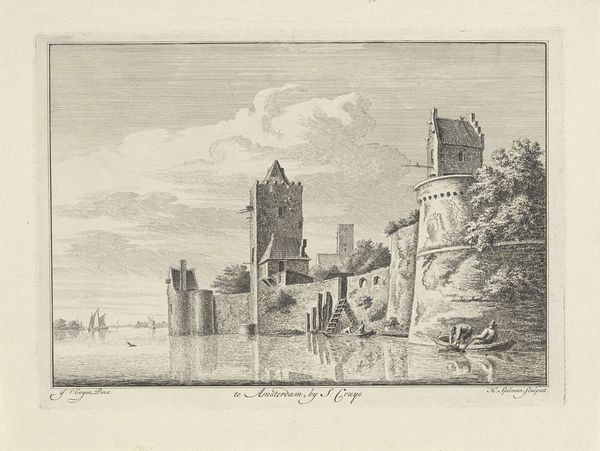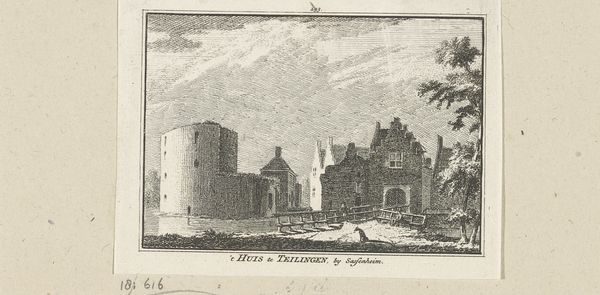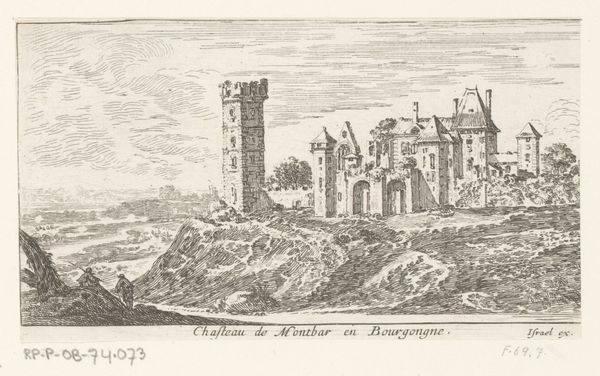
print, etching, engraving
#
dutch-golden-age
# print
#
etching
#
old engraving style
#
landscape
#
cityscape
#
engraving
Dimensions: height 80 mm, width 115 mm
Copyright: Rijks Museum: Open Domain
This is Abraham Rademaker’s "View of the Bijlhouwer Tower in Utrecht", created around 1660. Notice how the composition draws your eye immediately upwards. The stark, vertical thrust of the tower dominates the scene. Rademaker uses line and form to establish a hierarchy within the landscape. See how the detailed hatching and cross-hatching on the tower create a sense of monumentality, contrasting with the simpler, more loosely defined shapes of the surrounding buildings. This isn't just a record of a place; it's an essay on the relationships between permanence and transience, structure and formlessness. The tower, solid and enduring, stands in contrast to the more ephemeral and temporary structures around it. Rademaker uses the contrast between the detailed depiction of the tower and the softer rendering of the surroundings to suggest a meditation on time and history. The image destabilizes our perception of space and architectural representation. Consider how the verticality of the tower, emphasized by Rademaker's detailed linework, functions as a visual signifier of power and longevity, an assertion of human presence against the passage of time.
Comments
No comments
Be the first to comment and join the conversation on the ultimate creative platform.
